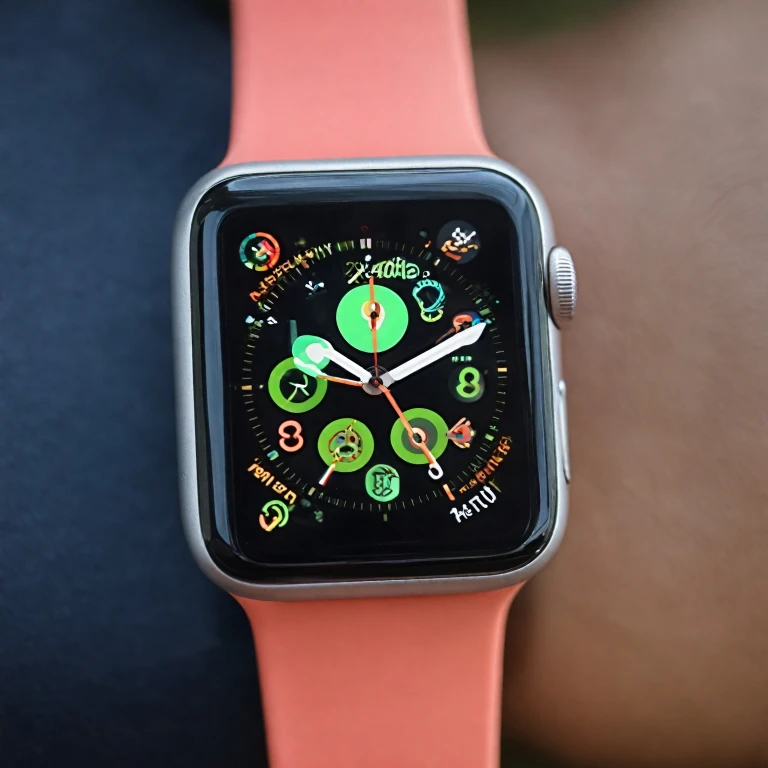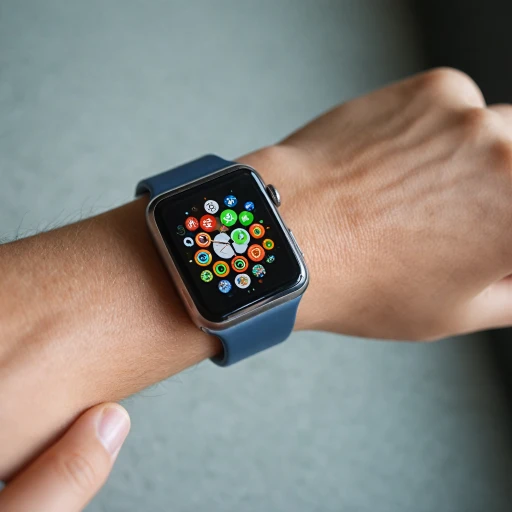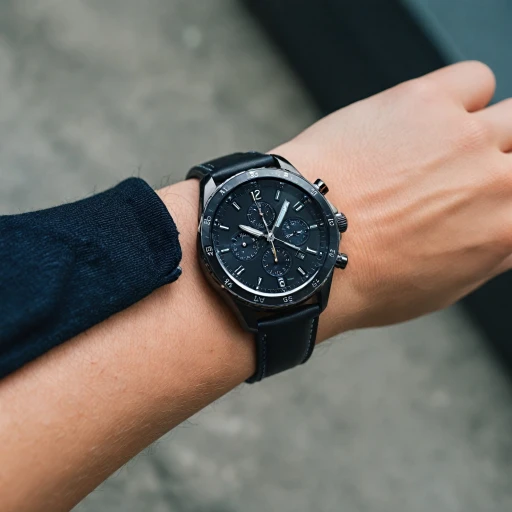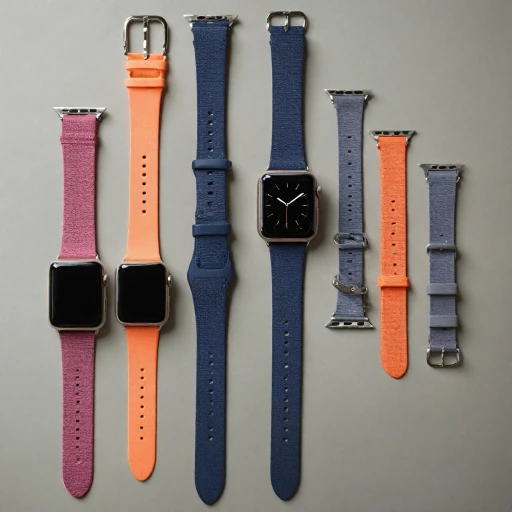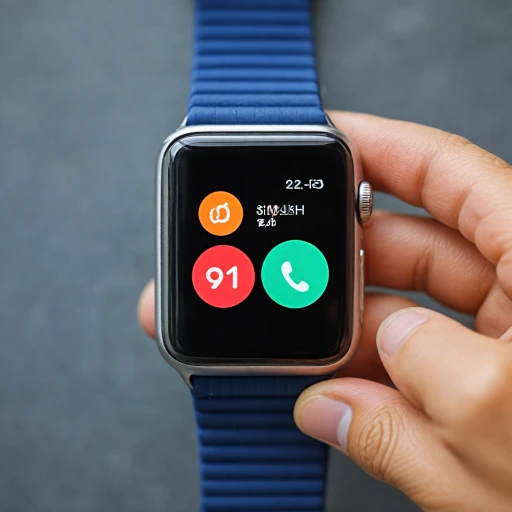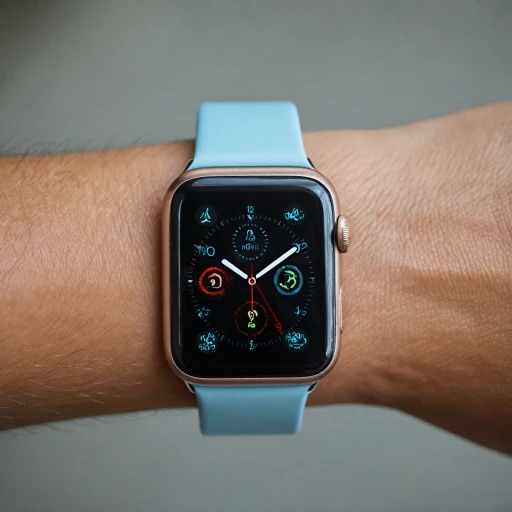Understanding Your Apple Watch Interface
Getting Acquainted with the Apple Watch Interface
When venturing into the experience of setting an alarm on your Apple Watch, the first step is to familiarize yourself with its interface. The Apple Watch, designed with the user in mind, provides a seamless connection between your wrist and daily activities. Whether you are an experienced user or new to this realm of smart devices, understanding the basics will enhance your overall experience.
All essential functions are accessible via the vibrant digital display, which serves as your hub for tasks, from tracking health metrics to setting the perfect
watch alarms. The display, paired with the user-friendly touchscreen interface, allows you to navigate effortlessly through apps like the Alarm and Clock, vital in managing your alerts and alarms efficiently.
Here's a quick walkthrough to get you started:
- Digital Crown: This is your main point of interaction. Use it to scroll through apps, adjust the volume or time, and press to return to the home screen.
- Side Button: Situated just below the Digital Crown, this button provides quick access to recently used apps and Apple Pay.
- Touchscreen: A simple tap or swipe is all it takes to interact with various features, set alarms, or adjust the settings on your watch or iPhone app.
Your Apple Watch can sync seamlessly with your iPhone, ensuring that any alarms set will ring on both devices. For those looking to maximize the capabilities of your device, explore the use of Siri. By simply saying, "Hey Siri, set alarm for 7 AM," you can quickly set an alarm.
By mastering these fundamental elements, your Apple Watch becomes not just an accessory, but an essential part of your routine, efficiently managing alarms and ensuring you wake on time. As you delve deeper into the functionality, you'll discover how to access and set alarms, sync with other devices, and manage them efficiently, creating a perfect blend of convenience and utility.
Accessing the Alarm App
Starting the Alarms App on Your Apple Watch
Navigating to the Alarms app on your Apple Watch is streamlined and user-friendly. Here's how you can do it efficiently:
- Wake the Display: Begin by raising your wrist or tapping the screen to wake your Apple Watch display. Ensure it's not in silent or nightstand mode for optimal user interaction.
- Access the App Screen: Press the digital crown to bring up the home screen, where all your apps are housed.
- Locate the Alarms App: Look for the app icon resembling a clock, known as the Alarms app. It's typically easy to spot with its simple clock face design. You can also use Siri by saying, "Hey Siri, open Alarms," if you prefer a hands-free approach.
- Explore Options: Once within the Alarms app, you're ready to explore and set a new alarm. The interface is intuitive, designed to mimic familiar iPhone app layouts.
For more in-depth guidance on maneuvering through other smartwatch interfaces, consider visiting our
comprehensive guide.
With an understanding of how to start and navigate the Alarms app, setting your wake or sleep alarms becomes seamless. Whether it's managing alarms or syncing with your iPhone, Apple Watch offers flexibility and ease for all users.
Setting a New Alarm
Steps to Successfully Set an Alarm
Setting an alarm on your Apple Watch is a straightforward process that ensures you wake up or get timely reminders throughout your day. Here’s how you can do it:
- Wake the Apple Watch: Begin by waking your watch either by raising your wrist or pressing the digital crown. The familiar watch face should appear.
- Launch the Alarms App: Locate the Alarms app on your Apple Watch. You can tap the icon or say, “Hey Siri, set an alarm,” and Siri will conveniently bring you to the alarm portion of your interface.
- Creating a New Alarm:
- Once inside the Alarms app, you will see a list of all existing alarms, if any. Tap the “Add Alarm” button.
- You'll be greeted with a time setting screen where you can scroll the hours and minutes using the digital crown. Set the desired time when you want the alarm to sound.
- After choosing your time, confirm your selection to make sure your alarm clock is set precisely.
- Choosing Alarm Sounds: Depending on your preference, you can select different alarm tones by tapping on the “Sound” option. You can also enable vibration in silent mode, so your wake alarm doesn’t disturb others but still alerts you.
- Enable Nightstand Mode: If you often use your watch as an alarm clock, consider enabling the nightstand mode via settings. This feature displays the time and easily activates the snooze button, improving usability.
- Verify with iPhone: Your newly set alarm will automatically sync with your iPhone, ensuring consistency across devices. If your watch is paired with the app on your phone, your configurations will stay aligned.
With these simple yet efficient steps, your watch alarm and any alarms set via your phone will work seamlessly together. To further maximize your Apple Watch experience, consider exploring guides on finding the ideal smartwatch for blood pressure monitoring.
Managing Existing Alarms
Handling Your Current Alarms on the Apple Watch
Managing the alarms on your Apple Watch is not only straightforward but also crucial for staying organized. Here’s how you can easily handle the alarms you've already set on your device.
- Locate Existing Alarms: Open the Alarms app from the home screen, which you can find by pressing the Digital Crown. This interface should display a list of all active and scheduled alarms.
- Modifying an Alarm: To edit an existing alarm, simply tap on it from the list. You can change the time, sound, or even label it for better identification. Use the Digital Crown to adjust the time, and once you're done, tap "Set."
- Using Siri for Quick Edits: Harness the power of Siri by saying something like, "Hey Siri, change my 7 AM alarm to 7:30 AM." This hands-free method can be particularly helpful when you are multitasking.
- Deleting Unwanted Alarms: If you prefer not to wake to a particular alarm anymore, swipe left on the alarm in your list, then tap "Delete." This will permanently remove it from your Apple Watch.
- Leveraging Nightstand Mode: Use the Nightstand mode for easy access to your alarms at night. This mode turns your watch into a digital alarm clock when placed on its side while charging. Tap the screen to see the time and any upcoming alarms.
Be sure to keep your alarms in sync with other devices like your iPhone or iPad by enabling background app refresh and iCloud settings. This ensures you’ll never sleep through an alarm, regardless of where your Apple Watch or iPhone is located. Should you experience any issues with synchronization or functionality, consulting the user manual or support forums could provide the necessary solutions.
Syncing Alarms with Other Devices
Synchronizing Alarms Across Your Devices
Ensuring that your alarms are synchronized across all your Apple devices can seamlessly enhance the user experience. Your Apple Watch can communicate with other Apple devices like your iPhone, enabling alarm continuity and reliability. Here's how it works and how you can optimize it:
- Using iCloud: By having iCloud activated, your alarms can automatically synchronize between your Apple Watch and iPhone. This allows for the watch alarms you set to also appear on your iPhone, ensuring you won't miss any important wake calls. Ensure you're logged in with the same Apple ID on both devices for this synchronization to happen seamlessly.
- Utilizing the Alarms App: The alarms app on your iPhone will reflect updates made on your watch and vice versa. If you enable the alarm clock mode on your Apple Watch, this capability is often auto-set, requiring little to no configuration from your end.
- Integration With Siri: Another handy feature for Apple users is Siri. Asking Siri to "set alarm" not only configures your Apple Watch but also synchronizes with your iPhone, providing a hands-free experience in managing your alarms. Just be sure to enable Siri on both devices.
- Working with Nightstand Mode: If your Apple Watch is in nightstand mode, the device can act as an alarm clock, automatically syncing settings and times with your iPhone. This ensures that whether you’re in sleep mode or awake, your alarms remain up-to-date and accurate.
- Troubleshooting Reminders: In cases where alarms aren’t syncing as expected, the "turn off silent mode" function on either device can be a quick fix. Sometimes, ensuring that both devices are connected via the same Wi-Fi network and updating to the latest iOS can resolve any syncing discrepancies.
To get the most out of your Apple devices and ensure your alarms are reliably managed, make sure your devices are within range and fully charged. Proper syncing across devices can make a significant difference in your daily routine and punctuality.
Troubleshooting Common Alarm Issues
Troubleshooting Alarm Issues on Your Apple Watch
Experiencing some hiccups with your watch alarm? You're not alone. Alarms set on any digital device can sometimes encounter difficulties, but here are some practical troubleshooting steps to resolve common issues you might face with your Apple Watch's alarm.
- Check the Volume and Mode Settings
- Ensure your watch isn't in silent mode. If it is, the alarm won't sound as expected. You can check this by toggling the silent mode from your Apple Watch Control Center.
- Adjust the volume by pressing the digital crown and accessing settings, ensuring the alert volume is high enough to wake you.
- Verify Alarm Synchronization
- Make sure your alarms sync well between your iPhone and your Apple Watch. Open the alarm app on both devices, note the set alarm, and confirm they match.
- Update Your Software
- Outdated software can cause functionality issues. Check your watch and phone for any available updates. Regular updates fix bugs that might hinder your alarm's performance.
- Inspect Alarm Settings
- Double-check the time and days your alarm is set for. A common oversight is setting the alarm for the wrong day, especially if you're using repetitive alarms.
- Restart Your Devices
- A simple restart can often resolve temporary glitches. Try turning your Apple Watch and iPhone off and on to reset the settings.
- Consult Apple Support
- If the problem persists, reaching out to Apple support might be necessary. They can provide more detailed guidance based on the user-specific issues.
These steps should help ensure your watch alarm works seamlessly, allowing you to stay on schedule without a hitch. Remember, having backup alarms set on your iPhone could also serve as a temporary measure while you troubleshoot.
